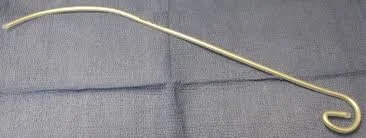The procedure of orotracheal intubation involves opening the mouth and placing into the mouth a metal or hard plastic instrument that is designed to lift the tongue out of the way. A light at the end of the instrument provides illumination and the paramedic will visualize the vocal cords which are located at the uppermost portion of the trachea. Once visualized, a hollow, stiff plastic tube is passed through the vocal cords and into the trachea. A balloon at the end of the tube is inflated to close off the trachea from the upper airway. Oxygen is provided along the tube by means of a bag valve mask. The bag valve mask is attached to oxygen and is squeezed several times a minute to inflate the lungs and deliver oxygen to the bloodstream. Medication facilitated intubation refers to using certain types of medications to provide sedation to the patient and allow the paramedic to intubate successfully the patient. Medication facilitated intubation is used when a patient who requires intubation still has a gag reflex present and has a clenched jaw that is difficult to open.
Orotracheal intubation medical expert witness specialties include EMT, emergency medicine, pediatric emergency medicine, neurology, pediatric neurology, and neuropsychology.

